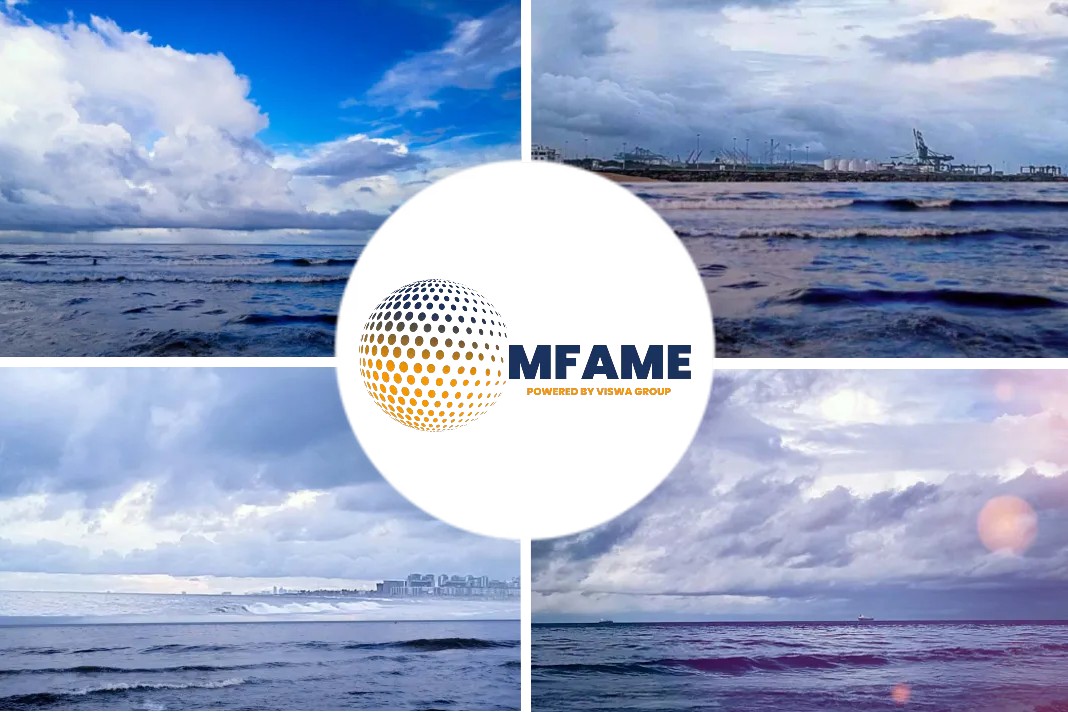LNG has gained significant traction in international shipping! It is clearly one of the signs of this fossil-derived fuel overcoming controversies surrounding its green credentials, and how it is able to maintain its place as a primary energy source well into the net-zero emission future, reports CNBC.
Surge in investment
The year 2021 has already witnessed a record high of nearly 200 LNG-fueled vessels placed with shipyards, according to leading classification society, DN Alternative Fuel Insight portal.
Globally, LNG-fueled new-builds on order exceeded 240 strong at the end of last year, out-numbering 48 for those with LPG, 22 for methanol and just four for hydrogen, according to DNV data.
This surge in investments coming through despite the COVID-19 pandemic and record LNG prices, is nothing short of remarkable. It is a visible proof of how advance LNG is in winning recognition as one viable marine fuel to slash ship emissions.
Ship owners pouring vast new-build investments on LNG-fueled tonnage, are banking on the fuel to stay relevant through the decades-long vessel lives as well as meeting a net-zero target for 2050 endorsed by the International Chamber of Shipping.
Jump global LNG bunkering fleet
Along with the expansion of LNG-fueled tonnage, global LNG bunkering fleet count has jumped to 35, up from 27 in 2020, with another two dozen on order, DNV data showed.
Shipping has thus far refused to accede to a call from the World Bank last year to halt LNG bunkering investment. Delving deeper into the rationale for doing so offers invaluable lessons for net-zero transition efforts in other key economic sectors.
The World Bank released a report last year, raising methane slip concerns to back up a call for a stop on LNG bunkering investments and divert resources instead to developing ammonia and hydrogen as marine fuel.
Issue with methane slip
Methane slip essentially refers to unburned LNG escaping from ship engines into the environment as methane, a very potent greenhouse gas. Yet, shipping, like many other core industries, could not afford to sit still on ship emissions while waiting on ammonia and hydrogen marine supply chains to scale up globally.
The industry is of the consensus that the required ammonia and hydrogen infrastructure to power up shipping, which carries over 90% of world trade, will take many years to develop going by the experience gained with LNG. The shipping community has long been aware of the emission reductions that are achievably by switching from oil products to LNG. Burning LNG instead of fuel oil can slash emission of Sulphur by 99%, Nitrogen Oxide by 90% and Carbon Dioxide by 20%.
Still, the marine use of LNG has developed slowly, beginning with bunkering for coastal shipping using LNG trucks then followed on with small tankers before progressing to ship-to-ship transfers for ocean-going tonnage.
LNG bunkering
Today, ship-to-ship LNG bunkering necessary to support ocean-going vessels is available across key choke-points of world trade, offering the visibility needed to support further construction of LNG-fueled shipping tonnage.
Ports in Japan have embarked on LNG bunkering while concurrently piloting the use of ammonia and hydrogen.
The first LNG bunkering vessel destined to operate in Japan’s Tokyo Bay was commissioned last year. The vessel, Ecobunker Tokyo Bay, is equipped with LNG storage tankers fabricated by AG&P’s yards in the Philippines. It is designed to bunker ships with either fuel oil or LNG and will be deployed to supply an LNG-fuelled cruise ship being built for NYK Cruises out of Yokohama.
Yokohama, which ranked among the busiest ports in Japan, has embraced LNG bunkering as part of its broader decarbonization plan. To be clear, however, port administrators and ship owners did not adopt LNG plainly because of the time pressure to slash emissions. The shipbuilding industry has already introduced technologies that curbs the methane slip risk from combusting LNG onboard ships.
Wärtsilä as a leading manufacturer has laid claim to reducing methane slip from LNG dual fuel ship engines by more than 70% over the last 25 years. Major ship owners also view switching to LNG as both the most pragmatic means to immediately lower emissions with a visible pathway to a net-zero future. Research showed the volumetric energy densities of liquid ammonia and liquid hydrogen are only about 40-50% that of LNG. This implies ships need to sacrifice more revenue-earning cargo space to store and burn liquid ammonia and hydrogen compared to LNG especially over long voyages.
CMA CGM, which ranked among the world’s three largest container lines, has undertaken further trials proving up the net-zero transition pathway for LNG-fueled ships. Several of its vessels including the 23,000-TEU Jacques Saade, were successfully refueled with over 10% bio-LNG blends, demonstrating ships built to run on LNG derived from fossil sources do not need retrofits to burn bio-LNG, a widely recognized zero-emission fuel. Under the Poseidon Principles – a widely applied green ship finance framework, LNG-fueled vessels that use over 10% bio-LNG can also qualify for a preferable funding, trade group SEA LNG stated in a published analysis.
Bio-LNG is still very costly though the price of this green fuel may well come off significantly if concerted efforts are put in to ramp up its production. Shipping’s experience with LNG has gone to show that by proactively investing in future fuels and the appropriate technologies, industries stand better to weather the pain in transitioning to a net-zero future.
Did you subscribe to our daily Newsletter?
It’s Free! Click here to Subscribe
Source: CNBC


















